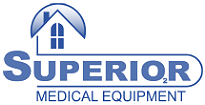Sleep Apnea
Sleep Apnea literally means "sleep without breath". It is a disorder that causes individuals to be unable to breathe normally while sleeping. The inability to breathe may be caused by the partial or total closing of the airway due to the pressure of the soft tissue surrounding it. We call this Obstructive Sleep Apnea (OSA). Another less-common type of sleep apnea is caused by the brain not sending a signal to the body to draw breath normally. We call this type Central Sleep Apnea (CSA).
Watch the video below for a computer model of Obstructive Sleep Apnea, referred to in the video by the general term "Sleep Disordered Breathing" (SDB).
Signs and Symptoms
Given that sleep apnea has serious consequences to health and safety, it is important to determine if you or your loved one is suffering from it. While an estimated 5% of adults suffer from sleep apnea, most remain undiagnosed and untreated. The following are common symptoms and conditions that help identify individuals likely to have sleep apnea:
- Snoring, interrupted by pausing in breathing
- Gasping or choking during sleep
- Restless sleep
- Excessive sleepiness or fatigue during the day
- Large neck size: >17" for men, >16" for women
- Crowded airway
- Morning headache
- Sexual dysfunction
- Frequent urination at night
- Poor judgement or concentration
- Irritability
- Memory loss
- High blood pressure
- Depression
- Obesity
Diagnosis
Talk to your doctor about your risk for sleep apnea. We can help with ApneaLink or Home Sleep Study
Treatment
The most effective and reliable means of treating sleep apnea is simply applying pressurized air to the airway to keep it open. This pressure is delivered using an electric blower called a CPAP, connected to a mask to be worn during sleep.


